As the Olympic Games in Rio de Janeiro, Brazil are coming, I would like to review the history and see which scientific and technological products that appeared in previous Olympic Games are still in use today.
2000Sydney 2008 Olympic Games
1.shark skin like swimsuit
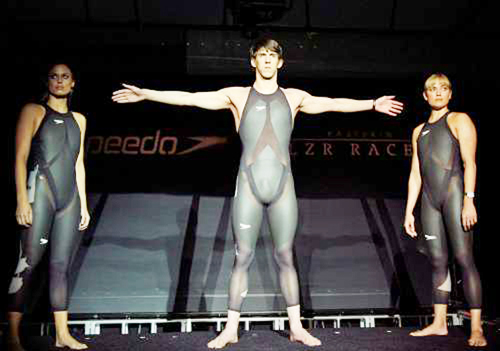
For the first time in the Olympic Games, Australian star Thorpe won three gold medals in this swimsuit. Many swimmers try to enhance their competitiveness by using a "shark skin" one-piece swimsuit with a V-shaped back. Because according to the manufacturer of this swimsuit — — Speedo claims that it can increase the speed of swimmers by 3%.
2.Trait racing suit
Marion Jones in the United States and Cathy Freeman in Australia and other sprint stars use special running clothes developed by Nike. This kind of running suit is very sleek and has a hood, which can cover all parts of the sprinter except his face, hands and feet. This can keep the muscles warm and compress, and improve the sprinter’s performance.
3.Recycled products sports equipment
Steve Moneghetti, an Australian marathon runner, took part in the competition wearing shorts and vest made of recycled soft drink bottles. According to the manufacturer Nike, this material is cooler than other fabrics.
Olympic 100-meter champion Donovan Bailey put on special running shoes made by Adidas. It is said that this special running shoe has a hard metal plate, which can keep human toes as stiff as jaguar’s claws when running.
2004Athens Olympic Games in 2008
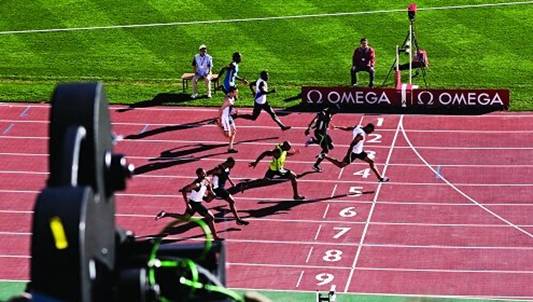
2008Beijing Olympic Games in 2008
The 2008 Beijing Olympic Games adopted a large number of world-leading new technologies, such as ground lifting stage, multimedia, ground LED system, command system, communication system and other dozens of high and new technologies, involving many fields.
1.Digital lamp
The Olympic rings rose slowly in the Bird’s Nest and flew into the vast night sky. China’s ancient painting and calligraphy scrolls slowly unfolded, showing the classical artistic conception of ink painting; On the ancient Silk Road, huge wooden boats braved the wind and waves — — These shocking visual effects are outlined by the gorgeous lights of the Bird’s Nest.
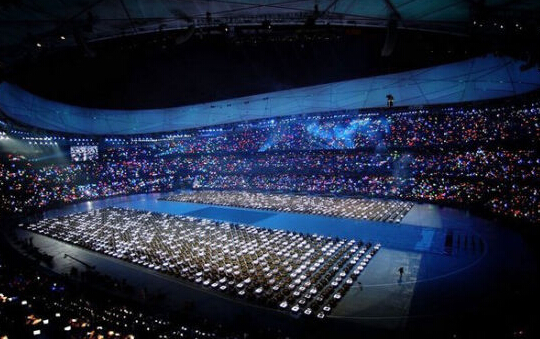
At the opening ceremony of the Olympic Games, more than 600 competition lights in the Bird’s Nest were all abandoned, and Zhang Yimou chose its own lighting. Science and technology have entered the digital age, and the lighting effect has also transitioned to digital lights. This new lighting effect makes the scale and imagination of the stage effect of the opening ceremony of the 2008 Olympic Games to the extreme. Digital lights are used in the 2008 Beijing Olympic Games: PG lights, that is, high-brightness projection lamp. By using the principle of optical projection and high-brightness light source, the contents on the negative are projected to the ground in full color, which can form a very visual impact picture effect at night. In the performance of the opening ceremony, the large scroll that runs through the center of the venue and the evolution animation from ancient times to modern times are successively displayed on the scroll, all of which are projected to the center of the venue by this PG lamp after pre-production. The simplicity of black-and-white contrast of China ink painting, the splendor of western oil painting and the strong color of Impressionism are all presented by this high-tech technology.
2.LED
LED (Light Emitting Diode) is a semiconductor solid light emitting device, which uses a solid semiconductor chip as a light emitting material. When direct voltage is added at both ends, carriers in the semiconductor recombine to cause photon emission and generate light. LED can directly emit red, yellow, blue, green, cyan, orange, purple and white light.
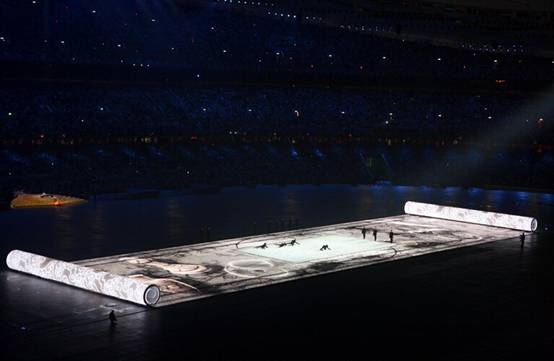
In the 2008 Olympic Games, LED was used to the maximum extent. The opening scroll is opened on a huge LED screen. The screen is 147 meters long and 22 meters wide. It is a huge platform with the highest scientific and technological content, with 44,000 LEDs on it. The light and shadow effects made by LED are closely combined with performances, which conjure up various patterns and introduce the audience into a fantastic world. After repeated tests, LED can completely stand the tests of stepping on by actors and flooding. Although the whole opening ceremony took a long time, the key technologies such as battery solved the energy problem of LED.
3.Aluminum alloy material
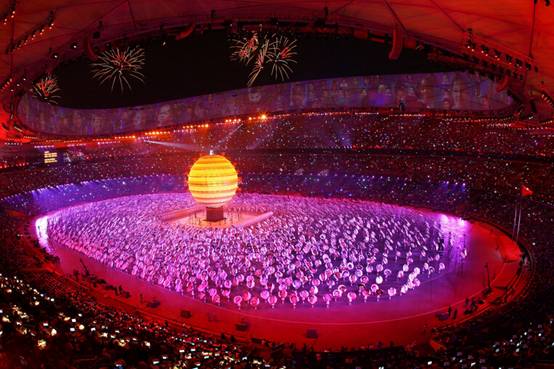
At the opening ceremony of the 2008 Olympic Games, a big hole was opened in the center of the stage, and a "earth" with a height of 6 stories and a diameter of about 20 meters slowly rose from it. Where is such a big "earth" hiding? It turns out that this "earth" is compressed underground first, that is to say, the spherical structure must be flexible. When placed on the ground, it is oval, and it will become spherical after being pulled up by the steel wire above.
After the ball is lifted by the lifting platform, the actor needs to perform on the vertical surface of the ball, so it needs strong stability after lifting to ensure the safety and effect of the performance. This all depends on high-tech aluminum alloy photosensitive materials, which makes the "earth" flexible.
4.multi-media
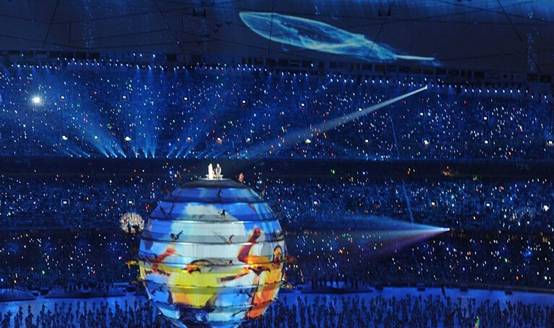
At the opening ceremony of the 2008 Olympic Games, "birds" and "whales" flew and swam freely over the huge scrolls. How did these come about? It turns out that slide projection technology was used in the opening ceremony before, but this time, all kinds of multimedia equipment were used. It can use computers to digitize media information such as words, graphics, images, animations, sounds and videos, and then integrate them into a certain interactive interface, so as to create a bowl-shaped screen of thousands of square meters at the top of the Bird’s Nest, showing a clear picture of the whale swimming freely and expressing the harmony between man and nature.
5.Digital ignition

Twenty-nine huge colorful footprints made up of fireworks opened the curtain of the 29th Beijing Olympic Games, symbolizing that the modern Olympic Games is coming towards Beijing step by step and entering the Bird’s Nest. The lighting of these 29 big footprints is controlled by computer system and digital lighting is adopted. This technology can ignite all fireworks in a short time, ensuring that fireworks can cross 3.5 kilometers in just a few seconds. In addition, there are 22 launching points in the dragon-shaped water system next to the Bird’s Nest. After digital control by computer, all fireworks bombs can shoot into the sky one after another, making the fireworks look like a flying dragon. Although traditional fireworks are still used, after digital ignition, fireworks show different visual effects from the past.
2012London 2008 Olympic Games
1.Photographic robot
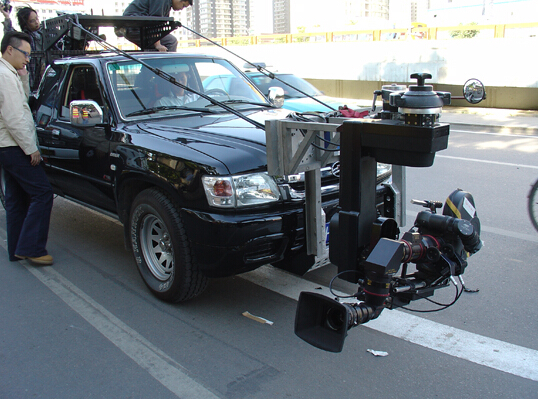
Getty Images, the official photo agency of London Olympic Games, installed photographic robots in some Olympic venues, which can realize remote control and 360-degree rotation. According to the NBC report, "photographic equipment can be hidden in flashlights, rafters and scaffolding, and placed in and around the Olympic Games, which can play the most important role in places where photographers can’t reach because of distance and safety reasons."
2.A more attractive voice
It is reported in the Atlantic Monthly that most of the voices heard on TV during watching the Olympic Games are not true. Some sounds were not recorded at the game site, at least in this sense, it is not true. Some audio is recorded in advance under optimized conditions and then used for TV broadcast. The website of Atlantic Monthly also cited an example of the Olympic archery competition. An Olympic audio engineer said that the sound was based on the sound he heard in the movie Robin Hood. He used a special microphone to collect the sound on the ground between the archer and the arrow rake. It is said that this method produces a sound that no one can actually experience at the scene.
3.Double runway
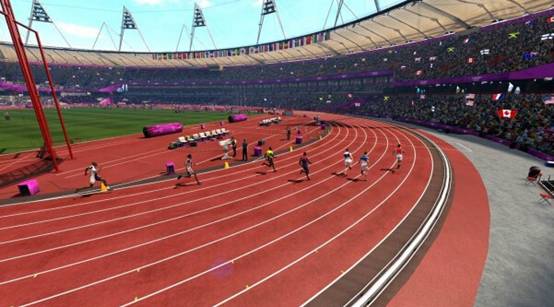
The runway of the main stadium of London Olympic Games has adopted a brand-new surface, which means that track and field athletes do not need to wear spikes to participate in the competition. According to the BBC, "Other runways are designed with rubber particles on the top floor, which combines the traction and shock absorption. Different from the past, the runway designed by Mondo separates these functions into two layers. The bottom layer is padded, which can cushion and shock absorption, and the top layer is durable, which can maximize the skid resistance, adhesion friction and durability. " This design makes it unnecessary for athletes to wear spikes on the track.
4.artificial limb
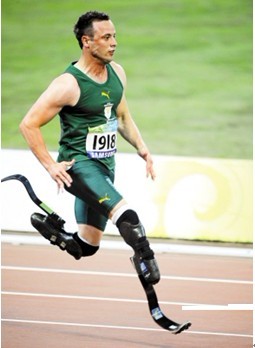
South African athlete Oscar Pistorius, who has nicknames such as "Oscar Pistorius" and "the fastest legless man in the world", became the first athlete to use artificial limbs to participate in the Paralympic Games. After a controversy over whether artificial limbs should be allowed to participate in the Olympic Games, Pistorius used special carbon fiber artificial limbs to participate in the 400-meter and 4×400-meter relay races.
5. Athletes who put data first
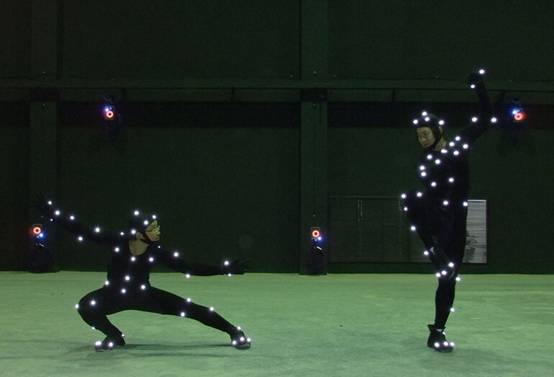
London Olympic Games is a "digital Olympics". Many athletes use sleep tracking devices and motion capture systems to understand their physical condition more accurately. According to the Financial Times, some companies dealing in biometric instruments also deal with athletes to participate in data collection to improve the performance of gadgets.
6.Virtual bicycle
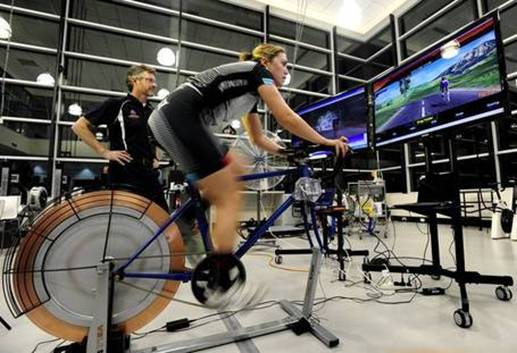
Although it is thousands of miles away from London, Australian cyclists have been training in London cycling track by using virtual reality technology. In a video of the Australian Broadcasting Corporation explaining the technology, it can be seen that cyclists are looking at a screen that looks like a video game, which is actually an environment that is completely simulated according to the London Olympic Road Cycling Stadium. Each training bicycle is fixed in the Australia Institute of Sport, but it is equipped with a screen, a GPS and some ranging tools. This system can also collect the training data of athletes, and the coach can clearly know their time-consuming, speed, energy and riding distance.
7.start detection system
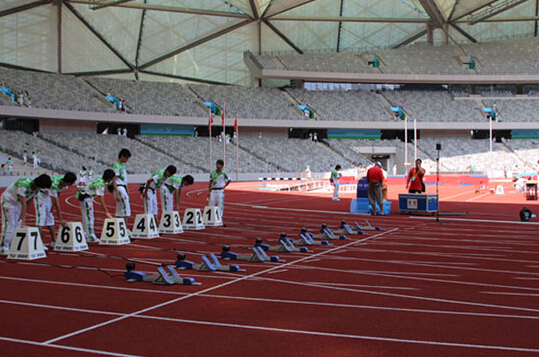
Omega, the official timer of the Olympic Games, brought a new starting equipment to swimming and track and field events in London Olympic Games. The track starter is fully electronic for the first time. It is said that the technology in the 1970s required athletes to push the starting device 5 mm to start. Now, swimmers start to light up directly to show who is in the first place, who is in the second place and who is in the third place.
8.Kick sensor
Originally, the Olympic Games may cancel the Taekwondo competition, but technically recording the strength and accuracy of kicking may save the event. Zhao Zhengyuan, president of the World Taekwondo Federation, said in an interview: "I think Taekwondo will really benefit from technology, because it can ensure that medals will be awarded to the best athletes and will not be awarded to others because of misjudgment by the referee. This is an excellent opportunity for us to stay in the Olympic Games. There are few competitions with this technology, which will help to eliminate human errors in taekwondo competitions. "
9.Digital housekeeper
Being selected for the Olympic Games is not only a proof of strength for an athlete, but also a supreme honor. Can the organizers of the Olympic Games use the power of science and technology to help athletes concentrate on the competition and eliminate their worries in life? Atos, the digital partner of the London Olympic Games, did just that. Atos Company established an identity information system for nearly 15,000 athletes who participated in the Olympic Games and Paralympic Games. The athletes who were included in the system were equivalent to obtaining a certification label, which made it easier to obtain visas and a series of preferential policies. Atos Company has also compiled a supporting application, so that athletes can log in to their identity accounts through their mobile phones, tablets or computers on weekdays. The account will contain a lot of information including the competition schedule, training plan and competition results, which is equivalent to providing a "digital housekeeper" for each participant.
10.Reduce the burden on runners

As a space power, the United States has also applied its own space technology to the preparations for the Olympic Games. Shannon Rowbury, a well-known American long-distance runner, unfortunately suffered from an injury and her femur was damaged. However, with the help of space science and technology, she only rested for six weeks after diagnosis and resumed training. Robery uses a set of AlterG anti-gravity running assistant device, which allows the trainer to train with at least 20% of his own weight, and the physical burden of the athlete will be greatly reduced. The principle of this treadmill is to pump air into the air bag around the runner’s waist. When the air pressure in the air bag rises, the runner will be lifted and the weight load will be reduced. Athletes can reduce their weight by up to 80% simply by pressing the up/down buttons in the panel.
11.Team overall data analysis

For cyclists, the wind tunnel laboratory is their loyal scientific and technological partner. The data analysis in the wind tunnel laboratory can help athletes optimize training programs, adjust training methods, and improve their performance by using aerodynamic scientific and technological achievements. But for a long time, the analysis of wind tunnel laboratory can only serve an athlete on a personal basis. Researchers at Monash University in Australia have improved an experimental device used to test airplanes and cars, enabling it to collect data of athletes for analysis. More crucially, this machine has crossed the barrier of analyzing individuals before, and can analyze the data of the whole bicycle fleet at the same time. In this way, the coach can make a training plan for the whole team according to the analysis results and find ways to improve the team’s performance.
12.Red BullXplan

Although an athlete participates in the Olympic Games alone, he represents more than just him. Behind the athletes, there is a team of coaches who support his motherland and train for him. Lolo Jones, an American hurdler, participated in the Red Bull Project X. She once said in a video: "I’m not fighting alone". The video shows the whole team behind Jones: a coach, a director, a manager, a sports scientist, a coaching consultant and a physiology consultant. Such a rich and powerful work team is naturally not busy in vain, they use the most cutting-edge technology.
The Red Bull X project uses a 3D digital analysis system, which can do many things that humans can’t. Plan X is divided into three parts — — Vicon 3D tracking system, optical measurement system Optojump Next and data acquisition tool Phantom Flex Camera. The three technologies complement each other, which can not only give a macro evaluation of athletes’ performance, but also disassemble every minute of training competition into countless tiny fragments for analysis.
Jones’s team made 39 reflection marks on her body. With these marks, 40 Vicon T40S motion capture cameras capable of shooting 2000 frames per second will track all her movements. Optojump Next, an optical measurement system, will decompose every jump of Jones into contact time, flight time, height, hurdle rhythm, specific energy, specific power, total energy and total power. Finally, Phantom Flex Camera, a top camera capable of shooting 10,750 frames per second, will record Jones’ every minute with images.
"If technology can help an athlete perform better, then this system can benefit everyone." Jones’s average hurdle time is 12.5 seconds, which she believes is largely due to the help of the team and technology behind her.
13.Real time feedback device

Good results in the competition will be cheered by the audience and graded by the referee. However, in training, how do athletes know their performance? Jonathan Green, composer, sound engineer and Gregory Sporton, dancer of the Visualization Research Unit at the Birmingham Institute of Art and Design in Birmingham, England, developed a feedback system called Motivepro. The original intention of this system is to provide real-time action feedback for dancers. Dancers are required to wear a series of sensors, and their movement information will be collected by Motivepro. Once the wearer’s physical activity exceeds the preset range, the vibrator in the device will vibrate to remind him.
Mimi Cesar, a rhythmic gymnast, found that this system can also be applied to rhythmic gymnastics similar to dance. For rhythmic gymnastics, the synchronization of the team is particularly critical. Motivepro system can give a reminder when an athlete’s movements are out of step, and can also collect sports information for the coach to analyze. With this system to help train, will the cooperation of the whole team be more tacit?
14.Brand-new pool take-off platform

The 2012 London Olympic Games used a brand-new upgraded swimming pool jumping platform in swimming competition. The platform was designed and manufactured by Omega. Compared with the previous take-off platform, the progress is that it has an adjustable inclined pedal certified by patent, which makes the athlete’s hind legs bend into a 90-degree angle when taking off in a squatting manner, which is considered to be the most suitable take-off posture. The new take-off platform is also equipped with a brand-new sensing system. This sensing system can ensure that athletes can hear the whistle at the beginning of the game at the same time, which can effectively avoid unnecessary mistakes of athletes. At the same time, the newly upgraded swimming pool take-off platform in Shanghai is equipped with a signal light system called "Swimming Ranking Indicator". At the end of the competition, the swimming lanes that won the first, second and third place will be marked on the take-off platform by different light spots, so that the audience can see at a glance.
15.Advanced drug testing equipment

GlaxoSmithKline is at King’ s College next to the Olympic Park. S College) has set up The Science Centre to serve the Olympic drug testing. During the Olympic Games, the center worked 24 hours a day, monitoring more than 6,000 urine samples and blood samples every day. After each competition, all the medal winners and the remaining half of the randomly selected contestants enter the center for illegal drug testing. The tested samples are divided into two parts, A and B, and A is stored for eight years for future more advanced scientific and technological testing; B was sent to the drug testing center. The drug testing center can check 70 illegal drug ingredients in one test, and each sample will be tested here for a total of 240 illegal drug ingredients. It can be seen that the fair conduct of the Olympic Games has a strong technical guarantee.
16.Electronic medical records

General Electric (GE) Medical Company provided an electronic medical record solution for the 2012 London Olympic Games, which made it possible for doctors and athletes to make medical records accessible through the Internet. The electronic medical records covering more than 700 participants were made in 90 days after the countdown to the London Olympic Games. At the same time, GE Medical Company also installed medical diagnostic equipment in the Olympic Park as a supporting facility for the whole set of electronic medical records.
17.Top medical logistics

During the Olympic Games, more than 16,000 Olympic athletes and more than 6,000 Paralympic athletes living in the Olympic Village will be fortunate to receive top-level medical logistics support. The latest version of super-large magnetic resonance imaging instrument, ultra-high-definition CT instrument, wireless digital X-ray detection system, upgraded ultrasonic detector and ECG detection equipment specially designed for the Olympic Games provided by GE Medical Company have all opened the eyes of medical volunteers for the Olympic Games. These equipments will not be removed after the Olympic Games, and they will continue to serve in this land that bears cheers and sweat.
2014Sochi Winter Olympics in 2008
Snow making: snow cannon
Snow making machine is a brand-new snow making system, which forms ice on an evaporator at -15℃ and sends it to ski slopes through cooled air. Due to the climate, Beijing and Zhangjiakou host the Winter Olympics, and a large number of snow making equipment will be used. Funa machine is not affected by climate, so long as it can keep a certain amount of water, it can make snow.
At the Sochi Olympic Games, the venue was really unfortunate — — Sochi is one of the warmest regions in Russia. In order to ensure that there is enough powdery snow to support the competition, Russian organizers use snow cannons to shoot a large number of artificial snowflakes. According to the news released by The New York Times, about 230 million gallons of water were used to make snow in this competition, and the snowfall covered an area of about 1,000 football fields.
关于作者